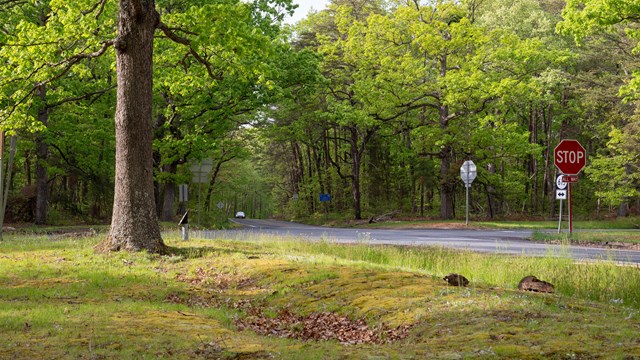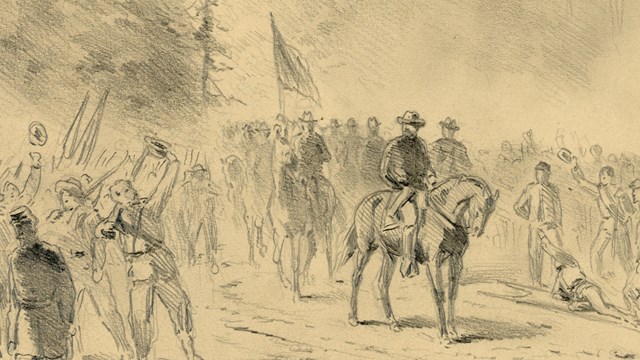
NPS Photo Visiting the Battlefield The Battle of the Wilderness took place over two days in May 1864. After US forces held the two intersections around which the fighting took place, they continued south, only to re-engage Confederate forces at Spotsylvania Court House. The park's visitor services, driving route, and trails provide a variety of options for exploring and connecting with the history of the battle.
Check the Operating Hours & Seasons page for our current hours and program schedule. The Wilderness Driving Tour follows the numbered stops on the park map. Below is a summary of the driving tour. Follow the driving tour on the NPS App (best for following the tour onsite, available at the Apple Store and on Google Play, audio is currently in development for this tour)
Prepare for Your Visit
Wilderness Driving Tour
Learn about the opening action of the Overland Campaign with this audio tour that follows the Wilderness Battlefield Driving Tour. 
Battle of the Wilderness
Federal forces marched south again in the spring of 1864, this time with General U.S. Grant in command. Explore the Wilderness Battlefield |
Last updated: July 7, 2025
